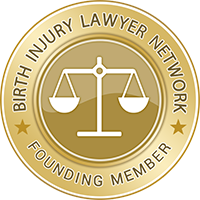Persistent Pulmonary Hypertension
A baby is said to have persistent pulmonary hypertension of the newborn or otherwise known as PPHN when the normal circulatory transition that is supposed to happen after birth does not occur. PPHN may be rare but it is a serious condition that can result to immediate and long-term complications and even death. To better understand PPHN, it is important to know how the baby’s blood is circulated while inside the mother’s womb and how it changes when the baby is born.
Baby’s blood circulation pathway before and after birth
A baby’s blood circulation does not follow the same path before and after birth. While the baby is inside the mother’s womb, its circulation does not pass by the lungs because the organ is not needed to exchange oxygen. Oxygen is provided to the baby by the placenta via the umbilical cord. This means that the pulmonary artery’s function while the baby is still inside the womb sends blood directly back to the heart through a fetal blood vessel called the ductus arteriosus.
Once the baby is born, he begins to breathe air through his nose and it follows that his circulatory system will also immediately adapt to his new environment. As air enters and inflates his lungs, the pressure in them changes and the ductus arteriosus will permanently close while the pulmonary artery now carries blood from the heart to the lungs where oxygen and carbon dioxide are exchanged. From there, blood is returned to the heart and pumped back out oxygenated.
In PPHN, the normal circulatory transition fails which means that the baby’s circulation did not switch from the fetal circulation to the normal newborn circulation. The ductus arteriosus remains open, so blood bypasses the lungs and continues to flow through the ductus arteriosus and returns to the heart with less oxygen or un-oxygenated, a condition known as persistent fetal circulation.
Causes of Persistent Pulmonary Hypertension
PPHN can be caused by an event or illness during pregnancy or childbirth such as meconium aspiration syndrome, severe pneumonia, infection, low blood sugar, birth asphyxia, respiratory distress syndrome, maternal use of nonsteroidal anti-inflammatory medications, late trimester maternal use of selective serotonin reuptake inhibitors, amniotic fluid leak, low amniotic fluid, and abnormal lung development as a result of congenital diaphragmatic hernia. Stress during pregnancy and isolated condition with an unknown cause can also lead to PPHN.
Some factors that may also increase a baby’s chances of developing PPHN are stress to the fetus during pregnancy or delivery, health conditions of the mother, including diabetes and complications during birth or pregnancy.
Signs and Symptoms of Persistent Pulmonary Hypertension
A baby with PPHN may exhibit tachypnea or rapid breathing, rapid heart rate, respiratory distress including signs such as flaring nostrils and grunting and cyanosis. These signs and symptoms may appear 12 hours after birth.
Diagnostic Tests
PPHN is diagnosed by performing imaging tests such as chest x-rays, ultrasound of the heart and head and laboratory tests such as arterial blood gas, complete blood count, serum electrolyte test, lumbar puncture and pulse oximetry.
Treatment of Persistent Pulmonary Hypertension
Correcting any predisposing condition such as low blood sugar, administering oxygen, preventing low blood pressure, and correcting low blood pH are the first steps in treating PPHN.
Complications and Prognosis of Persistent Pulmonary Hypertension
Even with intensive monitoring and immediate treatment, a baby with PPHN may continue to deliver not enough oxygen to the body's tissues leading to shock, heart failure, brain hemorrhage, seizures, kidney failure, multiple organ damage, and possibly even death.
Find an Experienced Birth Injury Attorney in your Local Community
 Find A Lawyer in Columbus, OH
Find A Lawyer in Ohio
Find A Lawyer in Any State
Find A Lawyer in Columbus, OH
Find A Lawyer in Ohio
Find A Lawyer in Any State
